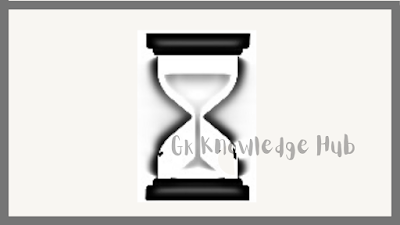What is a Taal
A Taal is nothing but in simple term called a
Rhythm. The movement or speed of the actions performed in singing, playing or
dancing is called a Taal (rhythm), which goes to show maintaining a uniform
speed, and the uniformity of Taal is called Laya (The Timing).
Kaal
The time taken in the process of singing dancing
and playing an Instrument is called Kaal, and the scale of measuring 'Kaal', is
called Lal.
Lal
The Lal is a medium, through which the time is taken for singing, playing and dancing is ascertained and it
called Taal/Rhythm.
Taal
A Taal is nothing but in simple term called a
Rhythm. The movement or speed of the actions performed in singing, playing or
dancing is called a Taal (rhythm). That goes to show maintaining a uniform
speed, and the uniformity of Taal is called Laya (The Timing).
Taal/Rhythm - The movement or speed of the
actions of singing, playing or dancing is called Taal. That is to say that the
singing which has a uniform speed, that very movement is called Laya.
Vilambit Lay
It is also called by doing tah rhythm. In
singing also, Bada Khayal, Shusht, Dhamar etc. are sung in this Taal. Some years of
delayed rhythm such as Jhumra, Ada-Chautal, Tilwara, Ektan etc.
Madhya Laya
Simple Laya, the zone is gentler and is not very
fast. We can compare the middle rhythm with the tick-tick movement of a clock
seconds needle. In Mayan Chota khayals, songs, hymns etc. are sung in this
rhythm. The Taals like Teental, Jhaptal, Dadra etc are played in Madya Lay.
Drut Laya
A rhythm that is twice as fast as the Madya
Laya is called the Drut Laya. Taranas, Chota khayals etc. are sung in this
Laya. The Madya Laya is played twice the speed of Madhya Laya.
Matra
A Matra is a parameter to measure the speed
of the Taal is called Matra. Matra is a unit by which Taal is fulfilled. Taal
originates from a set of Matras.
The Dadara Taal is formed from 6 Mataras
& if the Taal is played with lesser speed to Madya Laya can be measured as
Tah Laya & if played higher than Madya Laya will measure as Drut Laya.
One is to understand the Madhya Laya to ascertain the difference between the 3 types of Laya. And to know Madhya Laya the parameter is the second needle of a clock its sound of tick tick metrothm. Similarly, the Sum of the Matras & the time taken for the completion of a round of Taal, quantifies what type of Taal it is? Tah, Madya or Drut Laya
Aavartan (Round)
The total Matras or set of
Bol of a Taal is called Aavartan (rotation). The Taal goes on & on with several
Aavartan to complete a Taal.
Example: Let us see 1 Aavartan of a Jhap-Taal
as below;
.png) |
| Aavartan of Jhaptaal |
Theka
A sum of bol’s of one aavartan of a Taal,
which is played on the percussion instrument, is called Theka. Taal's bol is
played on the tabla or percussion instrument and the sum of Bols is called
'Taal Ka Theka'.
Sum
A matra with which the Theka begins is called
the sum of that year. Most often the sum of a Taal begins with the first matra.
A special emphasis is placed on the sum, which makes it easy to recognize it among
the other Matra. In singing too, the singer clarifies the song with emphasis or
by nodding his head to show the harmony of the song on a Sum.
Khali
Khali has the second most important after Sum in a
Taal Tekna. The Matra on which the left tabla is waived of the blank without
offering a beat is called Khali. Mostly Khali falls in the middle of the Matra’s
of a Tala, as there are 16 matras in the three Taal and the Khali on the 9th
Matra.
Taali
In addition to sum & Khali, there
are Taalis on different matras in a Taal, these are called tali or bhari. For
example, in three talas, there is Sum on the first matra and empty on the 9th
matras. The 5th and 13th Matras are Taali.
 |
| Image Teen Taal |
Laiykari
There are many other types of rhythms (Laiykari).
The singing of the Swadhikaris comes in different forms wherein listeners are
attracted by different types of lyricism. The listeners are attracted to different
types of rhythms (Laiykari). For example, hymns like Hah, Yugun, Tigun,
Chaugun, Ahgun, Sawai, Aad, Aad, Viah etc. are more prevalent. Some of the
rhymes are explained below.
Taha Laya
The rhythm in which only one single boli or
single matra is played or rendered is called Taha Laya. That is to say, there
is only 1 number on each matra in a Taha Laya. It is also called the rhythm of
the Badar.
Dugun Laya
In 1 Matra of the Rythum 2 boli Or swar is
tendered & such laiykary is called Dugun.
Trigun Laya
In 1 Matra of the Rythum 3 boli Or swar is
tendered & such laiykary is called Trigun.



.jpg)





Social Plugin